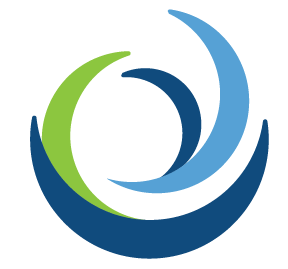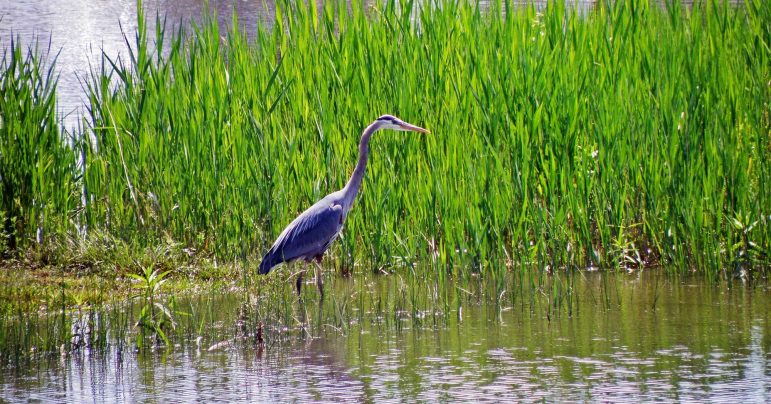
Beyond Volumes: Quantifying Water Quality Benefits with Confidence
Water Quality Benefit Accounting (WQBA) provides guidance for the water stewardship community to quantify water quality benefits for relevant projects using scientifically-based yet pragmatic methods.
By Derek Schlea, Principal & Senior Agricultural/Ecological Engineer, Pranesh Selvendiran, Senior Environmental Engineer, Laura Weintraub, Vice President and Water Stewardship Practice Area Lead, and Penelope Moskus, Principal and Senior Environmental Scientist (Ann Arbor, MI)
October 3, 2025
Going Beyond Volumes – Multiple Benefits Matter
We are excited to welcome a new resource to the corporate water stewardship practitioner toolbox. As water stewardship programs continue to thrive, leading to a growing portfolio of impactful projects, many companies are eager to report the multiple benefits of water stewardship projects, such as those that improve water quality and/or watershed health. Water Quality Benefit Accounting (WQBA) provides guidance for the water stewardship community to quantify water quality (i.e., sediment, nutrients, bacteria, temperature, and metals) benefits for relevant projects using scientifically-based yet pragmatic methods.
This ability to report these additional benefits will help organizations build the business case for investing in water stewardship, provide credibility for communications, and increase the likelihood that projects with water quality benefits will generate sustainable and beneficial outcomes and impacts that help address local shared water challenges.
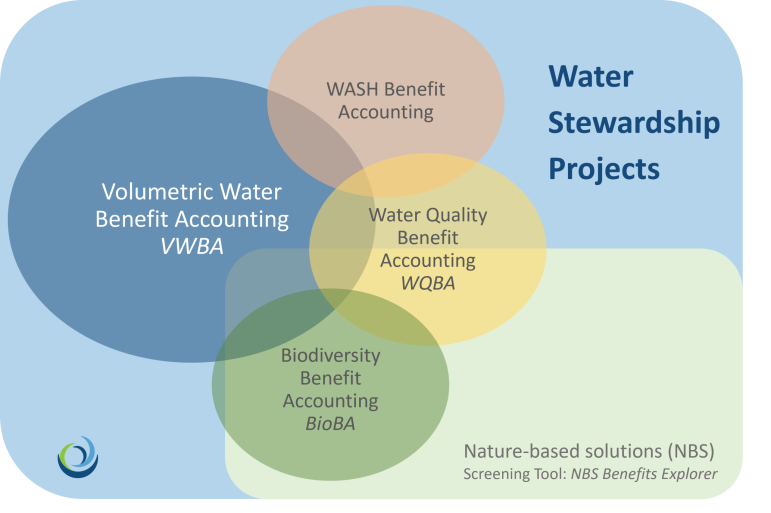
What is Water Quality Benefit Accounting (WQBA)?
Clean water is essential for maintaining public health, preserving ecosystem function, and supporting economic activities worldwide. Recognizing this, many companies have expressed an interest in incorporating water quality into their water stewardship programs and identified the need for a companion resource to the existing Volumetric Water Benefit Accounting 2.0 (VWBA 2.0) guidance.
The newly released Water Quality Benefit Accounting (WQBA) guidance fills this need and is a practical resource for companies to advance their commitments around improving water quality and watershed health as part of their water stewardship programs. WQBA helps organizations select applicable activities for addressing shared water quality challenges, determine appropriate water quality indicators and methods, quantify the water quality benefits (WQBs) of their water stewardship projects, track progress, and communicate the water quality benefits.
WQBA guidance, developed by LimnoTech, World Resources Institute (WRI), and The Nature Conservancy (TNC), provides a practical framework and methods for implementing, evaluating, and claiming WQBs of water stewardship projects. Although it was written primarily with private sector practitioners and project implementers in mind, the information provided in WQBA applies to a variety of audiences. This voluntary, non-prescriptive resource offers science-based and principle-based guidance for quantifying water quality benefits across a broad spectrum of water stewardship activities using methods that are both technically robust and straightforward to apply, and for making credible WQB claims.
How Do I Apply WQBA?
A key ambition in developing WQBA was to create a broadly applicable resource, similar to VWBA 2.0, that covers a wide range of stewardship activities. Despite the complexity of addressing inherently diverse environmental outcomes – given the growing and varied array of water pollutants – WQBA meets this goal by providing methodologies that are applicable across diverse geographies, project types (including agricultural, urban, sanitation, legacy contamination, and landscape management activities), and water quality impairments (such as sediment, nutrients, bacteria, temperature, and metal pollution).
Similar to VWBA 2.0, the WQBA guidance is framed as a six-step process that helps companies identify water stewardship activities and partners, and quantify, track, report, and communicate water quality benefits. A critical first step is understanding the local catchment context, ensuring companies understand the local water quality challenges that then inform actions to address water quality issues and generate positive environmental outcomes.
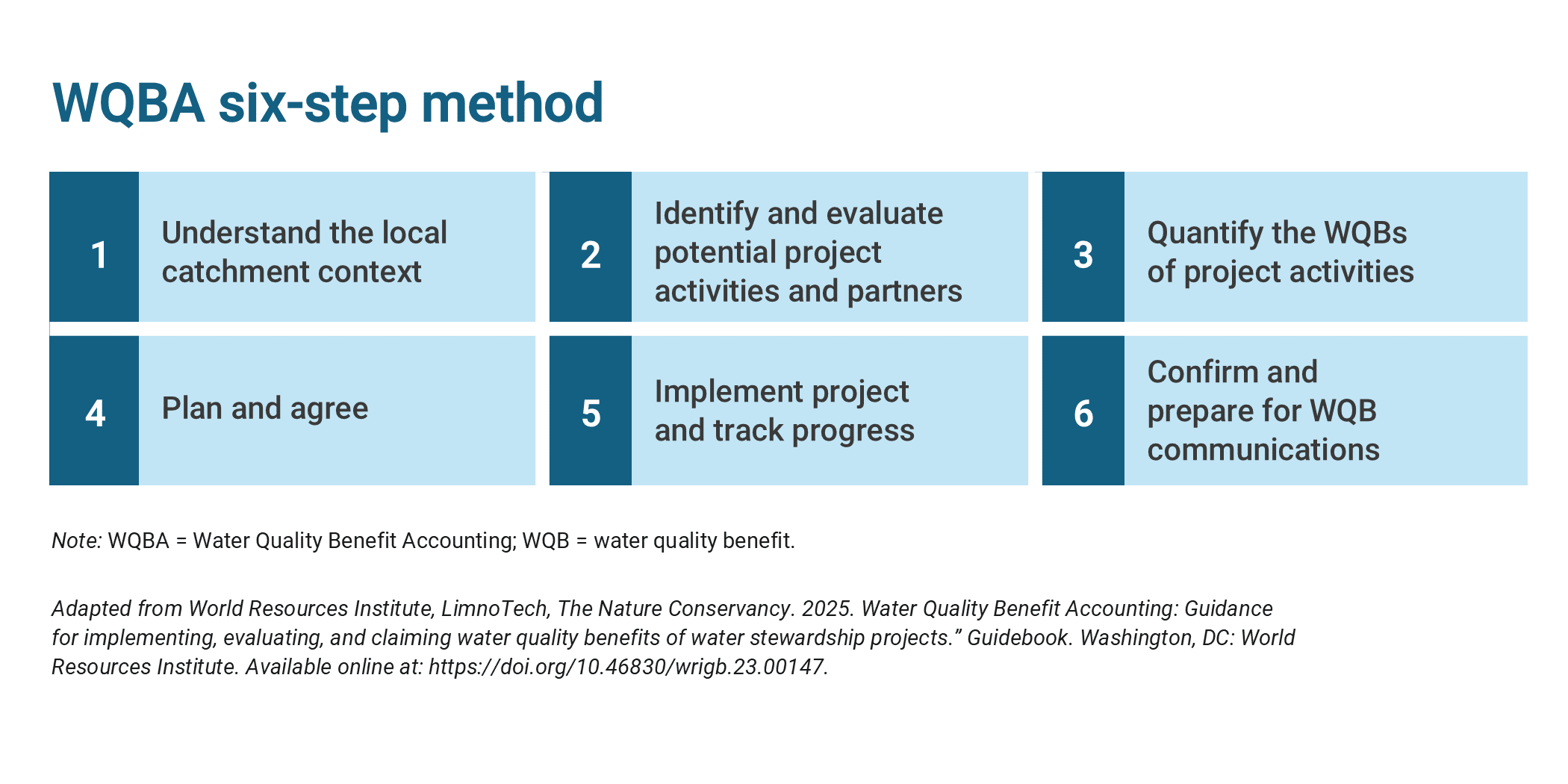
What Types of Projects are Applicable for WQBA?
WQBA can be applied to a variety of water stewardship project activities that have the potential to address water quality–related shared water challenges and, where relevant, align with existing efforts to address water quality issues. Examples of relevant activity types are summarized in the table below.
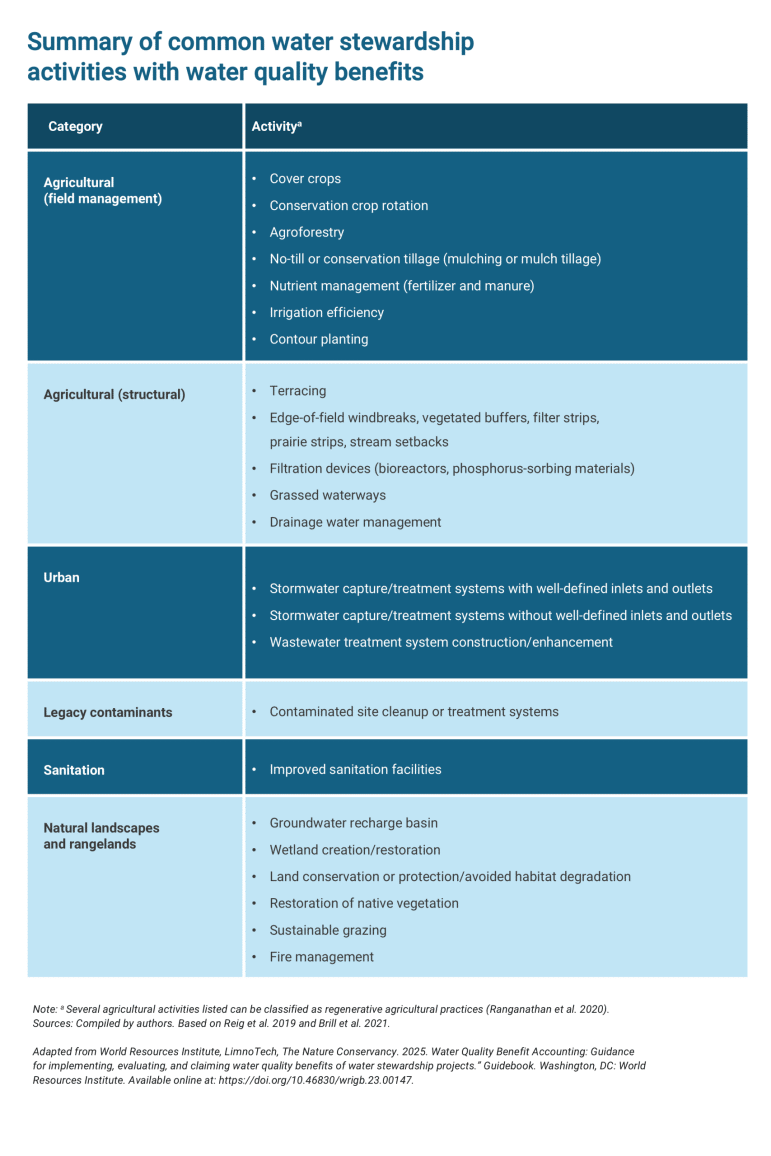
What are the WQBA Quantification Methods?
WQBA provides seven methods to quantify water quality benefits of common water stewardship activities, pollutants, and indicators:
- Pollutant Reduction Efficiency method: Estimates reduced pollutant loading by determining a representative unit area loading rate for the drainage area before and after project implementation.
- Simple method: Applies a runoff coefficient specific to certain land types and pollutant-specific event mean concentrations to estimate post-project improvements.
- Universal Soil Loss Equation method: Empirically models soil erosion as a function of rainfall, slope, soil erodibility, and other factors.
- Treatment System method: Estimates pollutant load or concentration reductions between the system inlet and outlet using a mass-balance approach.
- Water Quality Monitoring method: Measures pollutant concentrations at the inlet and outlet of a structural practice or in a receiving water body.
- Modeling method: Models changes in nutrient loads or concentrations using simple or mechanistic field- or watershed-scale modeling in a variety of land-use settings.
- Region-specific methods: Estimate or model water quality benefits using locally established and credible tools or models.
While most of these methods represent some form of model-based estimation, each method is relevant for specific applications. WQBA guidance helps practitioners select the appropriate method and indicators for their context. WQBA calculation methods are not lengthy, prescriptive “how-to” manuals, but they provide a sufficient level of detail for practitioners to support their application.
Each WQBA calculation method is accompanied by a hypothetical example or real-world case study, illustrating its use in a clear, easy-to-follow way. These example applications were thoughtfully constructed to cover a range of pollutants, indicators, and activity categories presented in the WQBA guidebook, including:
- Sediment load reduction from post-wildfire land restoration activities,
- Reduced copper contamination from urban stormwater runoff through impervious surface removal,
- Phosphorus load reduction resulting from improved agroforestry practices on coffee farms,
- Wastewater treatment system upgrades to mitigate bacterial impairments, and
- Peak stream water temperature reductions resulting from riparian vegetation restoration activities.
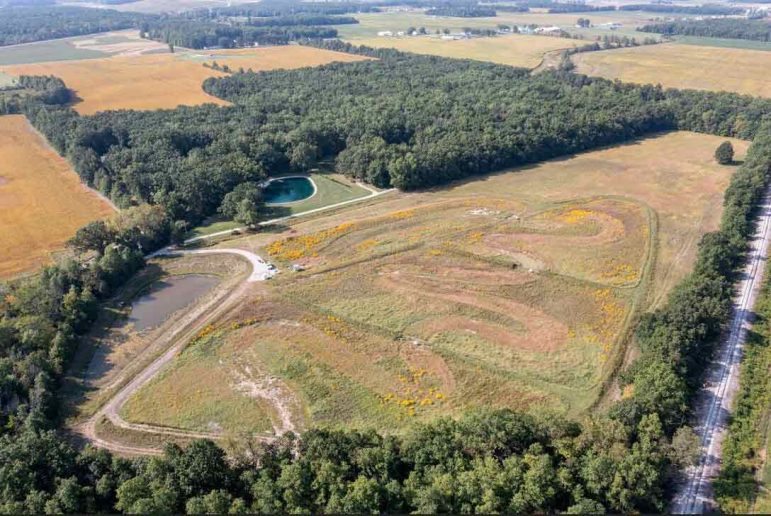
Can I use both WQBA and VWBA?
Yes! Both VWBA and WQBA can be used together to support the credibility and communication of water stewardship efforts. WQBA was intended to be an additional tool in the toolbox for water stewardship practitioners. Both methodologies can be applied to quantify the multiple benefits of a single water stewardship project.
Do I need a Water Quality Target to use WQBA?
No! WQBA provides a structured approach of programmatic best practices and science-based methodologies to quantify water quality-related benefits. This approach enables corporations to go beyond qualitative descriptions of water quality benefits and provides a pathway to communicate these benefits in measurable terms. Some organizations using WQBA may have quantitative or qualitative water quality goals in place. However, we anticipate that many organizations without specific, numeric water quality targets will find value in using WQBA to express the water quality benefits of their water stewardship efforts in a more quantitative way.
How does WQBA align with VWBA 2.0?
Although specific methods for benefit quantification differ between WQBA and VWBA 2.0, many elements are closely aligned. Both are voluntary and non-prescriptive guidance, built on the same principles of practicality, credibility, and replicability. Both frameworks follow the same six-step application process and were developed in close consultation with businesses, NGOs, government agencies, and other relevant parties. The programmatic guidance within both WQBA and VWBA 2.0 is consistent for project selection, tracking progress, and making claims.
How do I get started using WQBA?
WQBA can be downloaded here. Please join the project team for a series of free technical webinars where they will share more information on these impactful guidance publications. Please reach out to Derek Schlea at dschlea@limno.com if you have questions about how to incorporate WQBA into your water stewardship efforts.
The project team (LimnoTech, WRI, and TNC) welcomes water stewardship practitioners to view, use, and share WQBA across their networks.
We are grateful to the seven corporations that provided financial support to allow the project team to complete the guidance document, to the individuals with those companies that provided invaluable perspectives and review, to the independent experts that critiqued and improved the product, and lastly to our LimnoTech colleagues and partners at WRI and TNC that contributed to this effort.
WQBA authors are LimnoTech (Derek Schlea, Steve Skripnik, Laura Weintraub), World Resources Institute (WRI) (Sara Walker), and The Nature Conservancy (TNC) (Naabia Ofosu-Amaah, Kari Vigerstol).
The WQBA publication was made possible thanks to funding support provided by AB InBev, Amazon Web Services, Cargill, The Coca-Cola Company, Google, Meta, and Starbucks.
If you would like to learn more about how LimnoTech supports companies with their water stewardship goals and initiatives, don’t hesitate to get in touch with Penelope Moskus at pmoskus@limno.com, Pranesh Selvendiran at pselvendiran@limno.com, or Laura Weintraub at lweintraub@limno.com.
Follow us on LinkedIn and check the Insights & Perspectives page on our website for more information and updates.
Derek Schlea, PE, is a Principal and Senior Agricultural and Ecological Engineer with expertise in watershed planning, water quality, wetlands and other nature-based solutions, and agricultural conservation practices. His current roles at LimnoTech include executing technical work, managing projects, supporting employee ownership initiatives, and leading the company’s agricultural conservation practice area. During his career, Derek’s project experience has included developing and applying watershed and surface water quality models, completing watershed management plans and assessments, green infrastructure design, water quality performance monitoring, and decision support tool development.
Pranesh Selvendiran, PhD, is a Senior Environmental Engineer at LimnoTech. He has 17 years of technical and project management experience through a wide variety of projects in the U.S. and around the world. Pranesh supports LimnoTech’s corporate water stewardship practice area, helping clients assess and improve water management and develop strategies to minimize water quantity and quality impacts and risks. Pranesh’s principal areas of expertise include volumetric water benefit accounting (VWBA), water footprinting, operations and supply chain risk assessments, development and applications of water benefit methodologies, water strategy development, CDP water disclosure and reporting, development of watershed and hydrologic models, and project management. He has led and supported water risk assessments for several global companies and evaluated the water benefits of numerous water stewardship projects implemented worldwide by multiple multinational corporations. He is an accredited consultant for the AWS Water Stewardship Standard.
Laura Weintraub, PE, is Vice President, Senior Environmental and Water Resources Engineer, who directs LimnoTech’s corporate water stewardship practice area. Laura has over 25 years of experience supporting public, private, and research clients in the areas of watershed planning, water sustainability, TMDLs, stormwater management, source water protection, and decision-support system development. She supports companies in tech, food and beverage, manufacturing, electric power, and agriculture sectors with water stewardship strategy and target setting; water stewardship program development and implementation; water accounting; context-based water risk assessments; replenish project scoping and benefit quantification; AWS training and certification; and sustainability reporting. Laura supported the development of several multi-benefit quantification methodologies: volumetric water benefit accounting (VWBA 2.0), water quality benefit accounting (WQBA), and biodiversity benefit accounting (BioBA). She provides technical support and leadership on two water collaboratives established to address the ambitions of the CEO Water Mandate’s Water Resilience Coalition to mobilize corporate water stewardship in 100 basins globally: California Water Resilience Initiative (CWRI) and Mississippi Basin Water Action Collaborative (MRWAC). Primary activities included basin goal and target setting, roadmap development, and project pipeline development.
Penelope Moskus is a Principal and Senior Environmental Scientist with 30 years of experience. Penelope co-directs LimnoTech’s corporate water stewardship practice area, helping clients develop strategies, guidance, and tools to reduce water-related risks and supporting clients with water stewardship program implementation. She advises clients on project selection, has evaluated volumetric and complementary benefits of hundreds of potential and funded projects, and annually supports corporate reporting for numerous companies. Penelope has supported a major corporation’s replenishment program for 15+ years, including strategy development; development of replenish guidance; quantification and reporting of replenish benefits; validation, verification, assurance, and advising on internal audits. She also supports global and local NGOs, food and beverage companies, energy providers, high-tech companies, agricultural providers, and supermarket chains. Penelope contributed to Volumetric Water Benefit Accounting (VWBA) and is one of the authors contributing to VWBA 2.0. She has piloted Water Quality Benefit Accounting (WQBA) and is a Professionally Credentialed Specialist Consultant for the AWS Standard.


